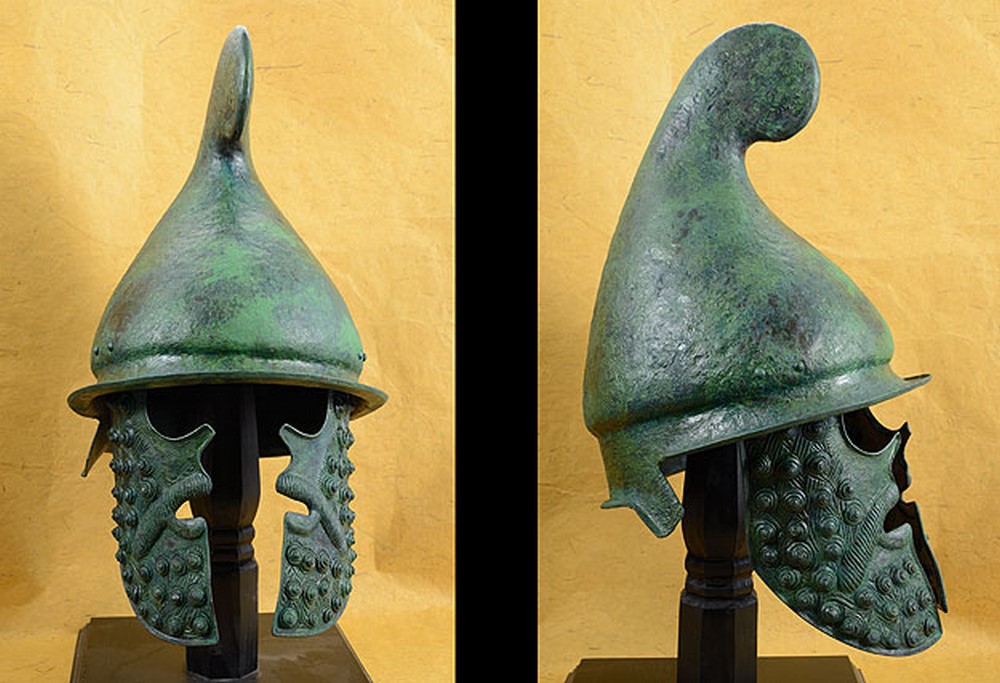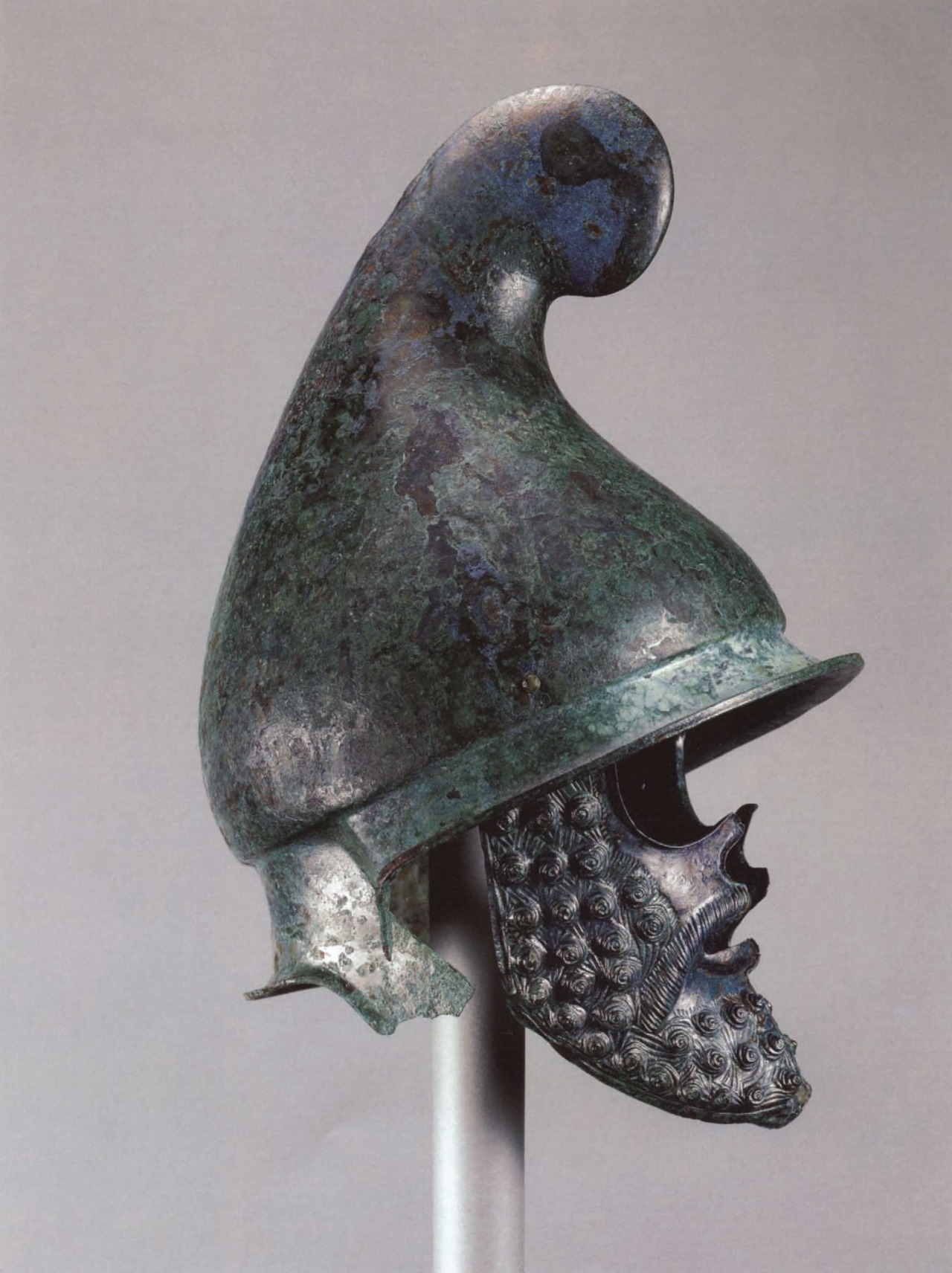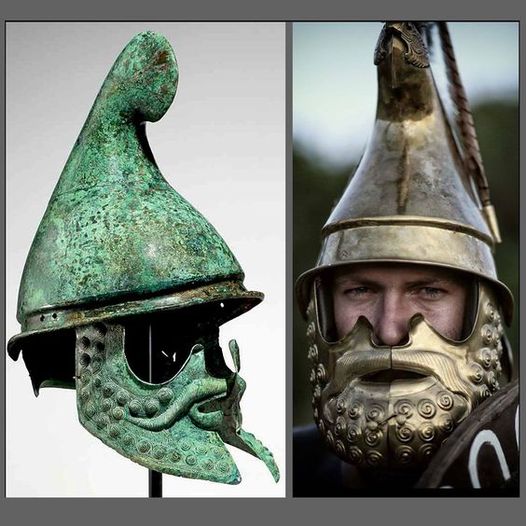The Phrygian helmet is a distinctive and iconic piece of ancient military equipment that has captured the fascination of historians, archaeologists, and military enthusiasts alike. Originating in Classical Greece, this unique helmet design went on to see widespread use across the ancient Mediterranean world, from Thrace and Dacia to Magna Graecia and the Hellenistic kingdoms.
In this comprehensive blog post, we’ll delve into the rich history and evolution of the Phrygian helmet, exploring its origins, key features, and the cultural and military significance it held throughout the ancient era. We’ll examine how this distinctive headpiece became a hallmark of ancient warfare and how it reflected the cultural influences and military strategies of the civilizations that embraced it.
The Origins of the Phrygian Helmet

The Phrygian helmet, also known as the Thracian helmet, is believed to have first emerged in Classical Greece during the 5th century BC. The name “Phrygian” is derived from the distinctive shape of the helmet, which resembles the caps or hoods traditionally worn by the Phrygian people, an ancient Indo-European civilization centered in modern-day central Turkey.
The key features that define the Phrygian helmet include its high, forward-inclined apex and the characteristic cheek pieces that extend down to protect the wearer’s face. This unique design was likely inspired by the practical needs of ancient warriors, providing superior protection while also allowing for greater visibility and mobility on the battlefield.
The Phrygian Helmet in Ancient Warfare
The Phrygian helmet quickly gained widespread popularity across the ancient Mediterranean world, becoming a common sight on the battlefields of Classical Greece and the Hellenistic kingdoms that followed. One of the earliest known uses of the Phrygian helmet was by the Macedonian cavalry during the reign of King Philip II, the father of Alexander the Great.
While Alexander the Great himself is said to have preferred the open-faced Boeotian helmet for his cavalry, the Phrygian helmet remained a prominent feature of the infantry forces in his legendary army. This is evidenced by its prominent depiction on the Alexander Sarcophagus, a stunning example of Hellenistic funerary art that showcases the military might of Alexander’s forces.
The Phrygian helmet’s popularity extended beyond the Macedonian and Hellenistic realms, with the distinctive headpiece being adopted by a variety of ancient civilizations, including the Thracians, Dacians, and the peoples of Magna Graecia (the Greek colonies in southern Italy). This widespread adoption speaks to the Phrygian helmet’s practical and symbolic significance in ancient warfare.

The Symbolic Significance of the Phrygian Helmet
In addition to its practical applications, the Phrygian helmet also held significant symbolic meaning in the ancient world. The distinctive shape of the helmet, with its high, forward-inclined apex, was closely associated with the cultural identity and warrior traditions of the Phrygian people, as well as the broader Thracian cultural sphere.
The Phrygian helmet became a visual shorthand for the concept of the “barbarian warrior,” evoking images of the fierce and skilled fighters who hailed from the northern reaches of the ancient Mediterranean world. This symbolic association was further reinforced by the helmet’s use in the iconography and artwork of the ancient Greeks and Romans, who often depicted “barbarian” or “foreign” warriors wearing the distinctive Phrygian headpiece.
The Continuing Legacy of the Phrygian Helmet

The Phrygian helmet’s enduring legacy can be seen in its continued presence in the cultural and artistic representations of the ancient world. The distinctive headpiece has become a recognizable symbol of ancient warfare and has been incorporated into the visual language of countless works of art, from classical sculpture to modern-day fantasy and historical fiction.
Even today, the Phrygian helmet continues to captivate the imagination of historians, archaeologists, and military enthusiasts. The discovery of well-preserved examples, such as the exceptional iron helmet found in the royal burial at Vergina, has provided invaluable insights into the construction, materials, and use of these ancient military artifacts.
Conclusion
The Phrygian helmet stands as a testament to the rich cultural and military history of the ancient Mediterranean world. From its origins in Classical Greece to its widespread adoption across the Hellenistic kingdoms and beyond, this iconic headpiece has become a enduring symbol of the warrior spirit and the technological and artistic achievements of the ancient civilizations that embraced it.
As we continue to uncover and study the Phrygian helmet and other ancient military artifacts, we gain a deeper understanding of the complex and interconnected histories that shaped the ancient world. By exploring the stories and significance behind these remarkable objects, we can better appreciate the enduring legacy of the ancient past and its continued influence on our modern world.
